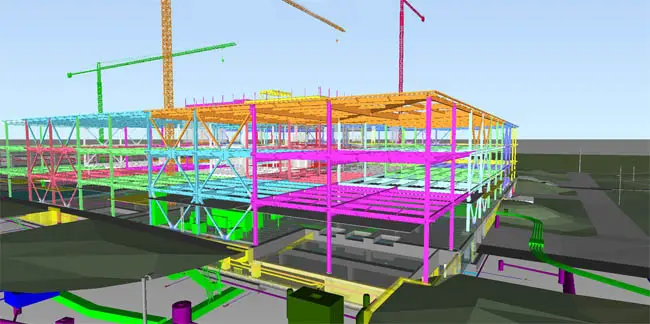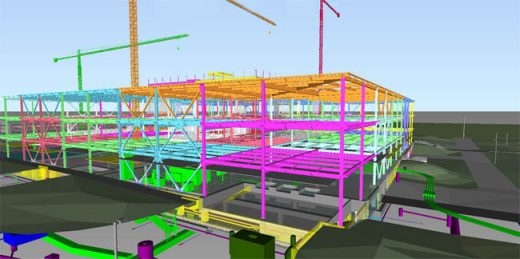4D BIM Promotes Onsite Safety Drives ROI, McGraw Hill Construction Survey, Structures Design
4D BIM Promotes Onsite Safety
Building Information Modeling – Survey Information
9 Dec 2014
4D BIM Promotes Onsite Safety – Drives ROI
4D BIM Building Information Modelling
According to a recent survey by McGraw Hill Construction, companies using (BIM) Building information modeling are reportedly experiencing higher ROI, faster production, improved safety & less liabilities. In 2007, when BIM was an emerging trend, the industry wide adoption of the technology was measured to be 28%, today it has increased to a whopping 71%. This can be credited to the increasing efficiency of BIM and its positive impact across the life cycle of a building.
Based on the responses from a survey (as a part of the Safety Management in the Construction Industry Smart Market Report) that included 263 general contractors, engineering firms and specialty contractors as participants, it was found that nearly 49% of BIM users experienced positive ROI as compared to those who did not use BIM.
BIM Safety for Construction
Why is BIM linked to improved safety for construction projects?
Today, BIM is invariably linked to on-site safety as it enables model driven prefabrication, which has strong safety implications. Companies using 4D BIM for construction safety planning understand and adopt safety practices more fluidly. This is very important. Why? Because, with the increased use of advanced technologies across the evolving AEC industry; structures are getting bigger and more complex. Naturally the safety practices and their adoption levels too need to be equally strong and well planned.
The three main applications of BIM that enable safety management
- Evaluation of on-site conditions for workers
- Identification of potential safety hazards
- Planning, analyzing and validating safety measures
The ability of BIM to identify the potential safety hazards even before the construction activities actually start on-site is one of the crucial factors that helps develop higher safety measures. For contractors, being able to identify where and what safety measures need to be taken for better on-site safety is the most valued proposition. Another area, where BIM activity contributes, is clash detection. Identifying potential clashes whether it is clashes between various disciplines or of equipment – BIM helps identify and henceforth prevent dangerous situations- where life and property are put to risk.
4D BIM not only enables improved project planning and construction scheduling, but also imparts a higher level of safety for a building development project and these benefits translate into higher ROI, and much more. This is why, Building information modeling has marked its place in the history of construction business and is also touted as the future of the building and construction industry.
About Author:
Bhushan Avsatthi is a senior manager, consultant, BIM expert and a green building advisor with more than 15 years of industry experience. He is involved in green initiatives like nonprofit tree plantation project and promotes using cycles for commuting small distances.
Image Credit: http://bradleybim.com/2013/05/21/bim-process-improving-construction-site-safety-turner-construction/
4D BIM Promotes Onsite Safety image / information received 091214
Location: UK
Architecture Designs
iHabit Modular System – Concept
Design: Jun Sakaguchi architect

image from architect
iHabit Modular System
BIM: Building Information Modelling
Architectural Concept Designs
Hanging Tower

image © Stephan Sobl
Metropolitan Vertical Theme Park

picture from architect
Prefabricated Architecture Book
Comments / photos for the 4D BIM Promotes Onsite Safety page welcome


